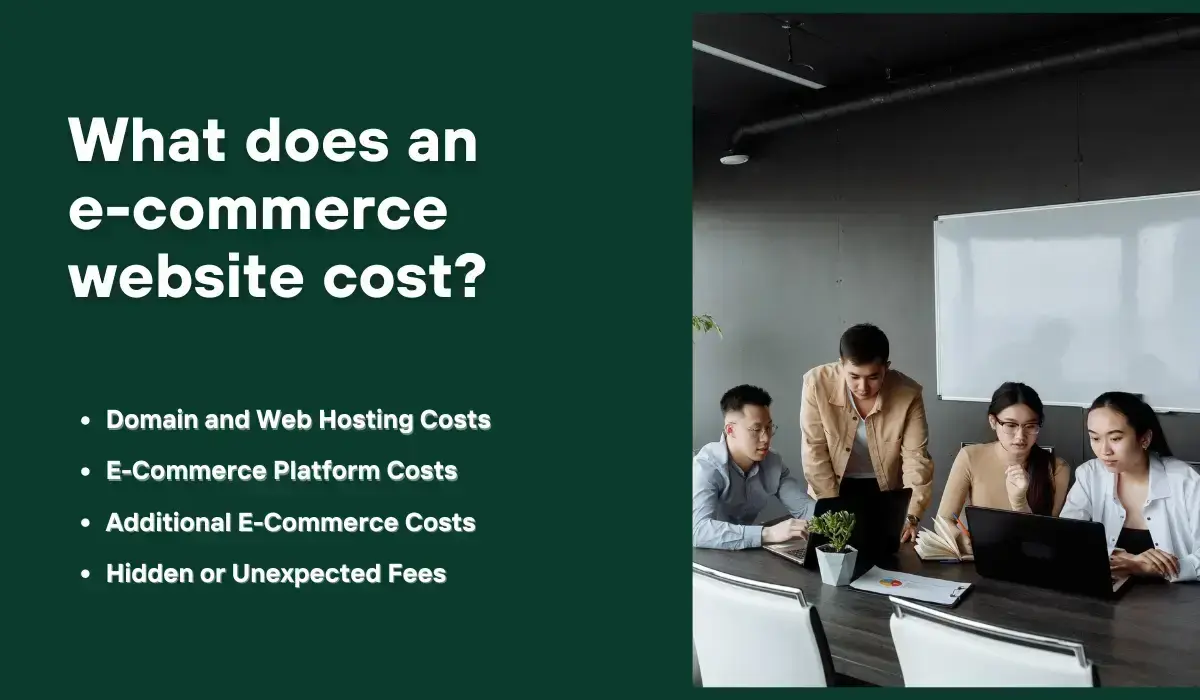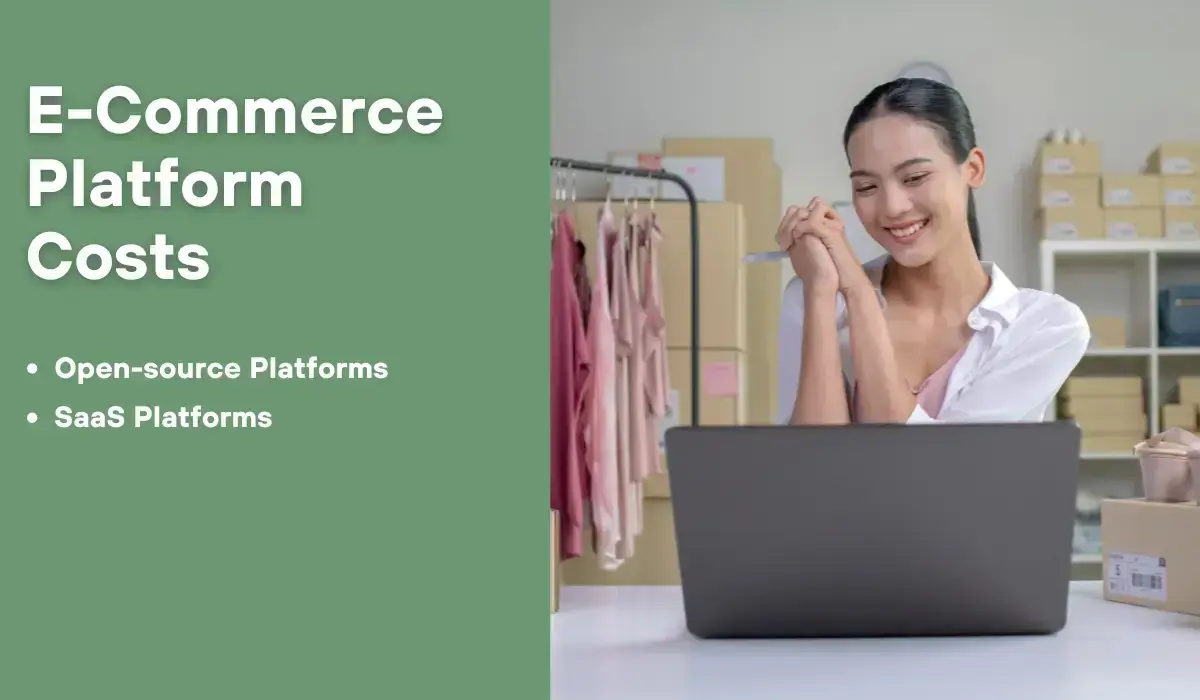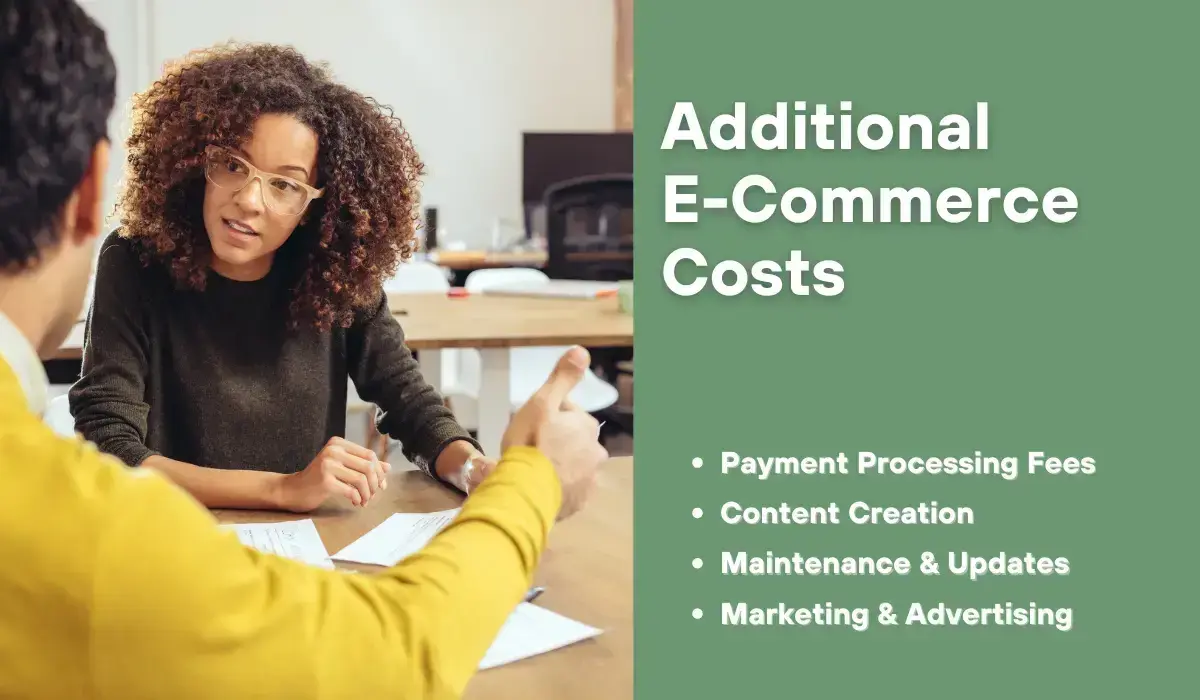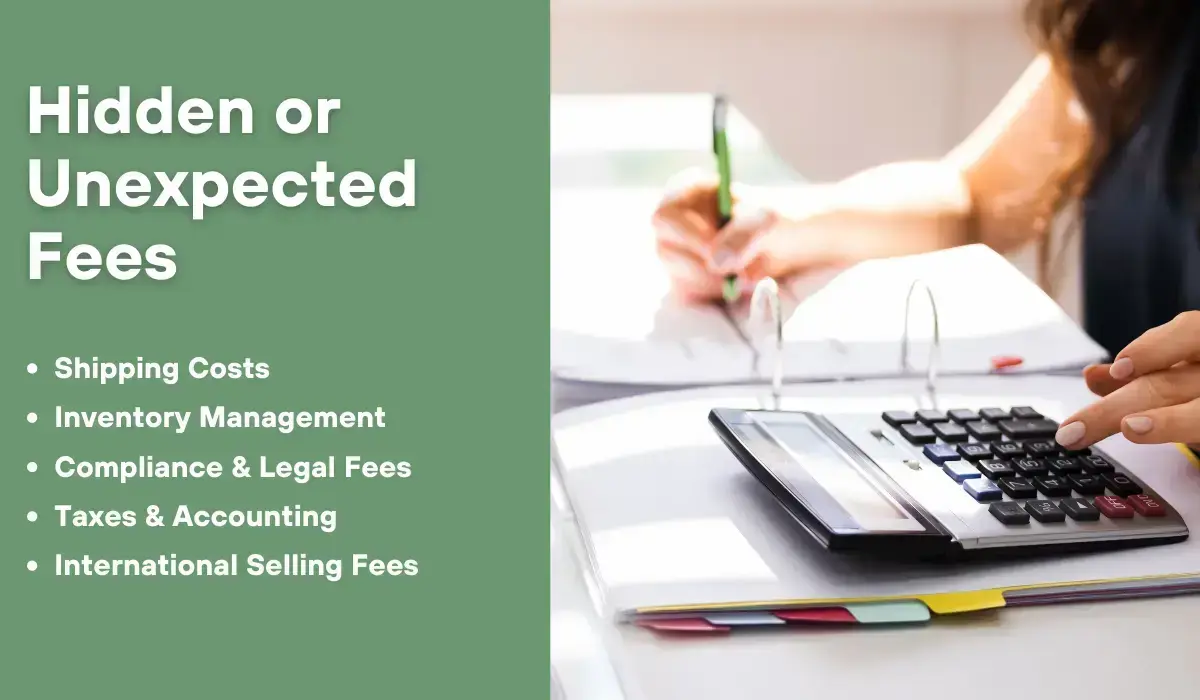Thinking about launching an online store? You're not alone. In today's digital age, e-commerce websites are essential for businesses of all sizes.
*Updated 8/18/2024
They're your 24/7 sales team, reaching customers beyond your local area. But before you dive into e-commerce, there’s an important question you need to answer – how much does it cost to build one?
Shortcuts:
- Domain and Web Hosting Costs
- Website Design and Development Costs
- E-Commerce Platform Costs
- Additional E-Commerce Website Costs
- Potential Hidden or Unexpected E-Commerce Fees

The truth is, there's no one-size-fits-all answer. The price tag can vary wildly depending on design complexity, features, and your chosen platform.
Let’s break down all the costs of creating an e-commerce website – from the bare essentials to the bells and whistles – to help you make informed decisions and plan your investment wisely.
Domain and Web Hosting Costs

Your domain name is your digital address, like "yourbusiness.com.” Think of it as your store's virtual street name.
Domain names typically cost between $9 to $20 per year, depending on the domain extension (.com, .net, .org, etc.) and where you purchase it.
Popular domains might cost more (sometimes up to thousands of dollars), but remember, a good domain is an investment in your brand.
On the other hand, hosting is like renting space where your website’s files are stored and made accessible to your site visitors. There are several types of hosting to consider, each with different cost implications:
- Shared hosting: This is the most economical option, where multiple websites share the same server resources. It's suitable for small businesses and startups. Average costs range from $2 to $10 per month.
- Virtual private server (VPS) hosting: Unlike shared options, VPS server hosting offers dedicated resources on a shared server, resulting in better performance than shared hosting. It's ideal for growing businesses with higher traffic. Expect to pay $20 to $100 per month.
- Dedicated hosting: This option gives you your private server. It's powerful but pricey, typically $80 to $500 monthly. Dedicated hosting is best for large businesses with high traffic.
- Cloud hosting: This option is flexible and scalable, with costs based on usage. Prices vary widely but often start around $20 per month. Cloud hosting is suitable for websites with fluctuating traffic.
While choosing the cheapest option is tempting, the e-commerce hosting provider you choose can impact your site's speed and reliability.
A good shared hosting or VPS plan is a solid starting point for most small—to medium-sized e-commerce sites.
Website Design and Development Costs

Design is where your vision comes to life, but it's also where costs can vary dramatically. Your choices here will significantly impact both your budget and your final product. Here are the key considerations:
-
Website templates vs. custom design
When it comes to design, you have two main options – using pre-made templates or opting for a custom design.
Pre-made templates or themes are the budget-friendly choice. They typically range from $0 (for basic free themes) to around $200 for premium options.
Many e-commerce platforms offer a selection of templates designed specifically for online stores.
On the other hand, custom design gives you a unique look tailored to your brand. Prices can vary widely based on design complexity and the designer's experience.
For instance, you might pay anywhere from $1,500 to $10,000+ for a custom WordPress theme for your e-commerce site.
-
Web development
This phase is where your design becomes a functioning website. It is also one of the most costly aspects of starting an e-commerce site. You can choose between doing it yourself or hiring a professional developer.
If you're tech-savvy and have the time, you can build the site using platforms like WordPress, Shopify, or WooCommerce.
It can save you money, but it's time-intensive and has a learning curve if you’re new to it. Hiring a professional developer is advisable if you lack the technical skills or prefer a more polished outcome.
Hourly rates for developers typically range from $25 to $200+, depending on their experience and location.
With a professional developer, here are some ballpark figures of what you can expect to pay, depending on your site requirements:
- Basic e-commerce site: $2,000 - $5,000
- Mid-range e-commerce site: $5,000 - $20,000
- High-end e-commerce site: $20,000 - $100,000+
Given the potentially significant costs of custom design and development, it's important to consider how to finance your e-commerce project.
While discussing budgets with your developer, remember to explore various financing options—whether invoice factoring for small businesses, a loan, or redirecting funds from other sources.
These options can help you achieve the custom design you want without compromising on quality due to immediate budget constraints.
E-Commerce Platform Costs

E-commerce platforms are the engine that powers your site, handling everything from inventory management to checkout. The costs will depend on the type of platform you opt for:
-
Open-source platforms
Open-source platforms like WooCommerce (for WordPress) and Magento are free to download and use. However, "free" doesn't mean there are no costs involved.
For instance, while the core WooCommerce plugin is free, you'll likely need additional plugins for features like payment gateways or shipping calculators. These can range from $0 to $300+ each.
The associated costs for open-source platforms might include:
-
- Hosting: $10 - $250+ per month
- Security: SSL certificate ($0 - $200 per year) Be sure to choose hosting for e-commerce.
- Plugins/Extensions: $0 - $1000+ (one-time or annual fees)
- Developer costs: Variable costs for customization and maintenance
-
SaaS platforms
SaaS platforms like Wix, Shopify, and BigCommerce offer all-in-one solutions with hosting included. They're easier to set up but come with ongoing subscription costs.
For instance, Shopify plans range from $9 to $299 per month, while BigCommerce pricing plans range from $29 to $399 monthly.
For a bit more context:
- The most popular Wix Business plan costs $36 a month and includes a free SSL certificate and hosting.
- The Basic Shopify package costs $39 a month, and you get SSL security but no other added extras.
- The Standard BigCommerce site costs $39 a month, with hosting and SSL, but if your revenue exceeds $50,000 annually, you must upgrade to the Plus plan at $79 a month.
Besides the subscription costs, there are additional costs to consider:
- Transaction fees: Some platforms charge a fee per transaction if you don't use their payment gateway
- Premium themes: $100 - $300 (one-time fee)
- Apps/extensions: $0 - $100+ per month each
Fortunately, POWR offers completely free apps and extensions on all of three platforms:
Remember, while open-source platforms might seem cheaper at first glance, they often require more technical know-how and can have higher development costs.
SaaS platforms are typically more user-friendly and include technical support, which can be invaluable if you’re new to e-commerce.
Additional E-Commerce Website Costs

In addition to the core expenses of setting up an e-commerce site, other often-overlooked expenses can significantly impact your budget but are crucial to maximizing the success of your online store.
-
Payment processing fees
Payment processing is an ongoing expense that varies between platforms, as do the costs! The two most common processors are PayPal and Stripe.
Wix Payments uses the standard 2.9% plus $0.30 per transaction for all credit cards and popular payment methods in the US, but may vary by country and payment type.
Shopify Payments charges can also vary between 2.4% - 2.9% plus $0.30 transactional cost. Avada has a helpful Shopify Fee Calculator you can use to determine your costs.
BigCommerce doesn't charge commission fees for using its pre-integrated payment gateways, including PayPal and Stripe, with the exception of PayPal powered by Braintree.
BigCommerce's PayPal transaction fees are the same standard as the others but decrease as you upgrade your service plan.
And if you plan to offer buy now pay later (BNPL) options those pee are considerably higher and start at 5.99% plus $0.30.
-
Content creation
High-quality content, including product descriptions, blog posts, and visual content, attracts and converts customers. If you don't create this content yourself, you must budget for professional help.
Content writers typically charge $0.10 to $1 per word, depending on their experience and the complexity of the topic.
This cost also depends on your chosen digital asset management strategy. For instance, you can use stock images and cheaper product photos as a cost-effective solution, but they might also look cheap and lazy to potential customers.
If possible, pay for professional product photography. You might have to fork out $25 to $150 per product, but you’ll get high-quality product images that can potentially boost conversions for your e-commerce site.
-
Maintenance and updates
Your e-commerce site isn't a "set it and forget it" project. Ongoing maintenance is crucial for security and performance. It includes regular software updates, bug fixes, and technical support.
If you need to handle this yourself, you might pay a developer or agency $20 to $200 per hour for these services.
Some providers offer maintenance packages ranging from $50 to $500+ per month, depending on the level of support.
-
Marketing and advertising costs
Finally, remember that building a site is just the beginning – you need to attract customers. Marketing costs can vary widely depending on your strategy.
Social media advertising might cost $200 to $1000+ per month. Google Ads can run from $500 to $10,000+ per month, depending on your industry and competition, while email marketing tools can range from $10 to $1000+ per month.
Consider content marketing, influencer partnerships, and other promotional strategies that might be relevant to your business.
Potential Hidden or Unexpected E-Commerce Fees

Beyond the standard expenses like design, development, and payment processing, these additional fees can impact your bottom line if not properly accounted for.
Shipping costs
- Unexpected rate increases: Shipping carriers can increase their rates, especially during peak seasons, which might not be accounted for in your initial budget.
- Insurance costs: Insuring shipments can add up, particularly for high-value items.
- Shipping supplies: Costs for packaging materials like boxes, bubble wrap, and tape can be higher than anticipated, especially if you aim to provide a premium unboxing experience. One way to keep packaging expenses under control is by sourcing cheap custom boxes that still meet branding and durability needs.
Inventory management
- Overstock and obsolescence: Holding too much inventory can lead to high storage costs, and unsold inventory might become obsolete, requiring markdowns or liquidation.
- Inventory shrinkage: Losses due to theft, damage, or errors in inventory management can add unexpected costs.
Compliance and legal fees
- Privacy and data protection compliance: Ensuring compliance with data protection laws like GDPR or CCPA may require legal consultation and software tools, which can be costly.
- Trademark and intellectual property protection: Costs for registering trademarks or defending your intellectual property can arise unexpectedly.
Taxes and accounting
- Sales tax compliance: The need to comply with varying sales tax laws across different states or countries can lead to additional software or service costs.
- Accounting fees: As your business grows, you might need more sophisticated accounting services, which can be more expensive than anticipated.
International selling costs
- Currency conversion fees: If you sell internationally, currency conversion fees can impact your margins.
- Customs duties and taxes: Handling international shipments might require paying customs duties, taxes, or brokerage fees that weren’t originally budgeted for.
Wrapping Up
The cost of an e-commerce website isn’t a one-size-fits-all answer. The costs can add up quickly, from domain names and hosting to design development and other expenses. But don't let that scare you off!
Building an online store is an investment in your business's future. The key is smart budgeting and planning. Start by assessing your specific needs and goals.
Are you a small boutique looking for a simple, elegant solution? Or a large retailer needing robust features and scalability? Your answers will guide your budget decisions.
Ultimately, whether you're working with a shoestring budget or ready to invest heavily, there's an e-commerce solution for you. Start with the essentials, plan for growth, and don't be afraid to start small and scale up.
Author Bio
Shanice Jones is a techy nerd and copywriter from Chicago. For the last five years, she has helped over twenty startups build B2C and B2B content strategies that have allowed them to scale their businesses and help users around the world.


